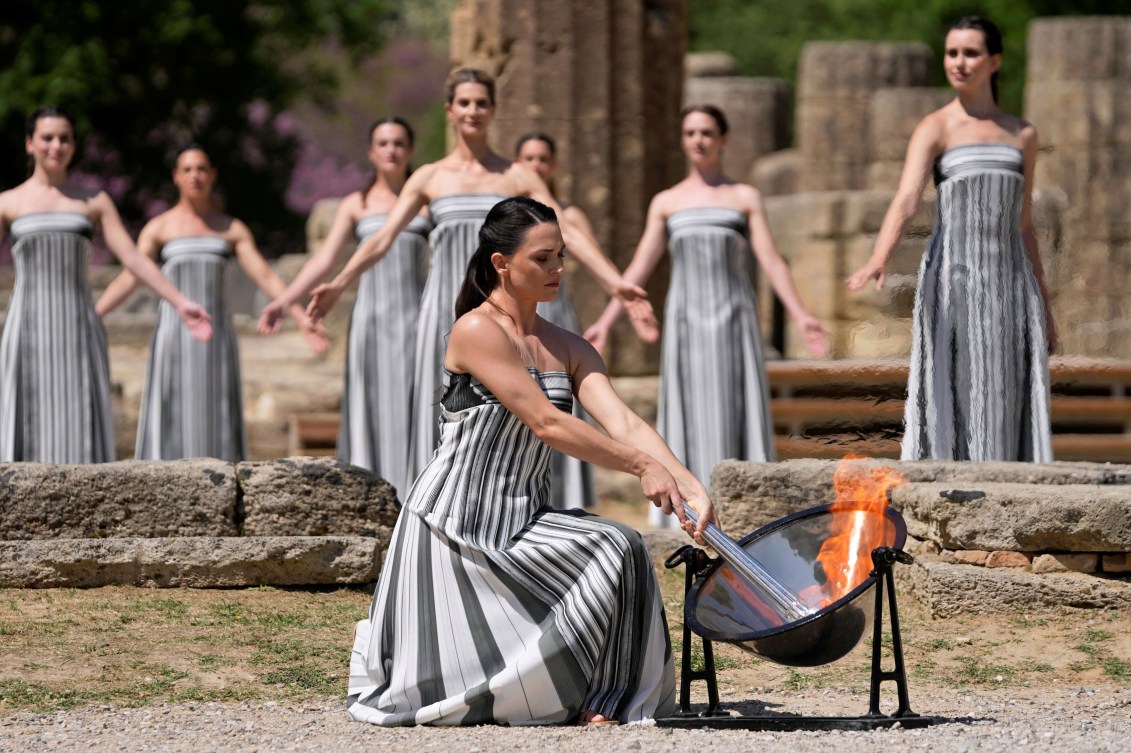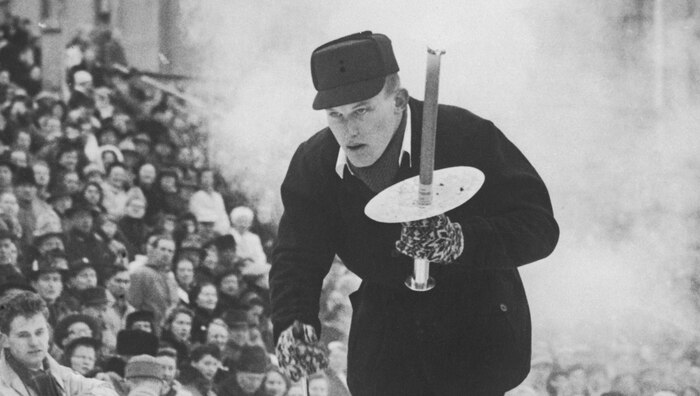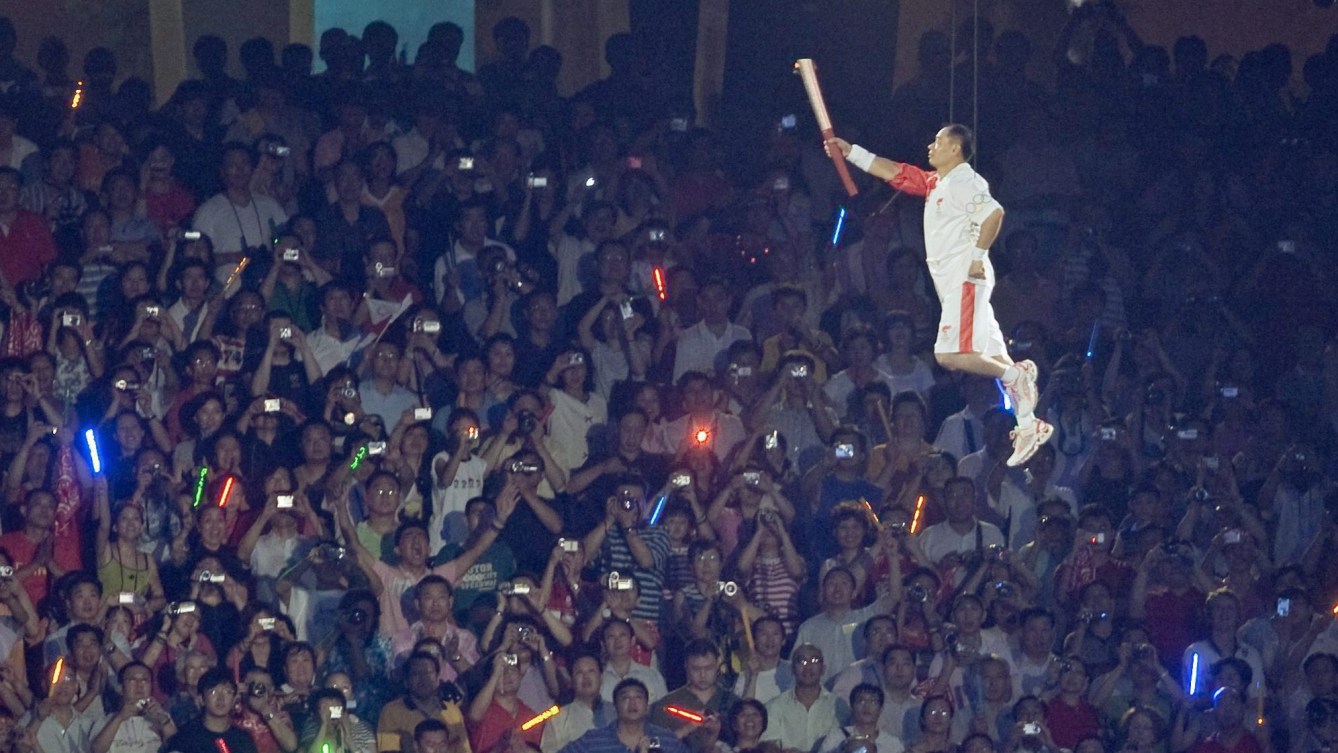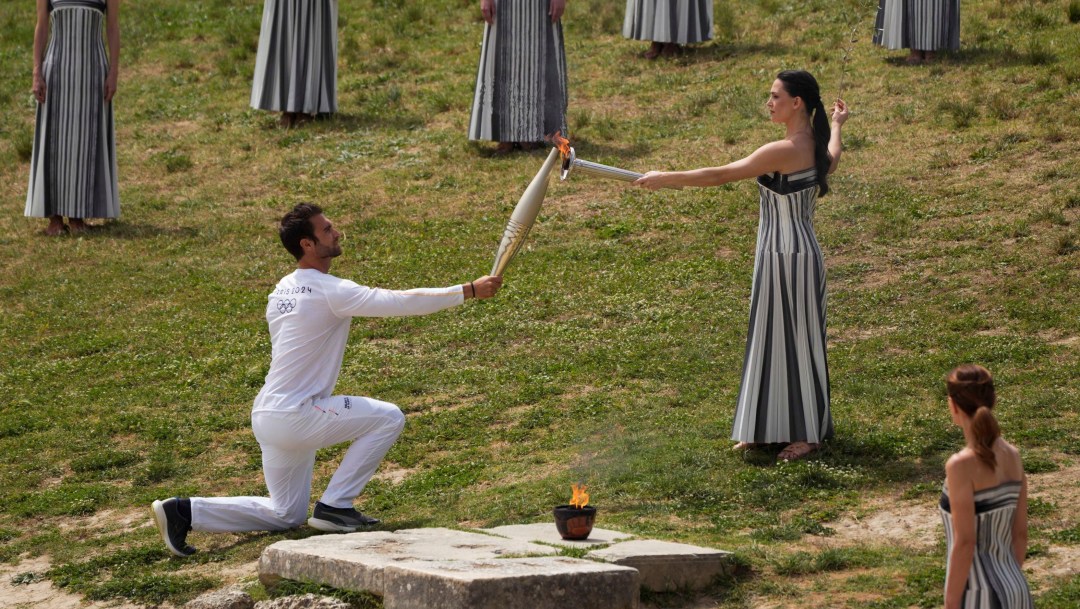FAQ: The Olympic flame and Olympic torch relay
Now a staple of the Olympic Movement, an Olympic torch relay takes place ahead of every Olympic Games, bringing the Olympic flame across the host nation (and sometimes the globe) to kick off the multi-sport event.
Here we answer some of the most commonly asked questions about the ceremonial event.
What is the Olympic torch relay?
The Olympic torch relay is a ceremonial event that, with the help of torchbearers, brings the Olympic flame from Olympia, Greece, to the host nation. The relay often includes stops around parts of Greece as well as within the host nation.
Read more about the Paris 2024 Olympic torch design and Olympic torch relay
Why is the Olympic flame lit in Olympia?
The Olympic flame is lit in Olympia, Greece to commemorate ancient Greek rituals. The Olympics in ancient Greece were held to honour the gods, most notably Zeus. Fires burned in many sanctuaries around ancient Greece, but none more than in the Temple of Hera, located in Olympia and named for the wife of Zeus. The modern ceremony takes place in the ruins of the Temple of Hera.
The eleven women that participate in the lighting ceremony are actresses, hired to play priestesses based on the Vestal Virgins, a group in ancient Greece who were dedicated to mastering societal rituals, including those involved in the ancient Olympic Games.

How is the Olympic torch lit?
The Olympic torch is lit using a parabolic mirror and the rays of the sun, thereby making it the purest flame. The mirror has a curved shape that focuses the rays of the sun to a singular focal point, which generates enough heat to light the fuel from the Olympic torch.
There has been one exception – the Oslo 1952 Olympic Winter Games. That stands as the only modern Games to not have its flame originate in Olympia. Instead, to honour the origins of skiing, it was lit at the home of 19th century Norwegian legend and skiing pioneer Sondre Norheim in Morgedal, long regarded as the birthplace of alpine skiing and ski jumping.

Does the Olympic flame ever go out?
There have been times when the Olympic flame has gone out during the torch relay. While it is considered the purest flame, it is susceptible to the elements just like any other flame. If the Olympic flame is extinguished, the torch is re-lit using backup flames that travel alongside the relay. Those flames are suitable to relight the torch because they are just as pure as the original flame, having been lit in Olympia during a dress rehearsal a couple of days prior to the official ceremony. These backup flames can also be used if there isn’t enough sun to light the torch on the day that the lighting is scheduled to take place.
READ: 10 amazing places the Olympic torch has travelled (including space!)
How does the Olympic flame get to the host nation?
Open flames on airplanes are widely frowned upon, therefore the Olympic flame is placed inside a security lamp (similar to a miner’s lamp) when it begins a long trip and also when the relay takes a break each night. The flame has to sleep somewhere!
But as far as how the flame physically gets to a country… it is through many different ways, often depending on the proximity of the host nation to Greece. Olympic flames have traveled by plane (the first time being during the Helsinki 1952 Olympic torch relay), boat (it has crossed the English Channel twice, for London 1948 and London 2012), and other modes of transportation such as spaceship, camel, and horseback. The most unbelievable form of transportation may have occurred in the lead up to the Montreal 1976 Olympic Games, when it the flame was sent from Athens to Ottawa via satellite.

When did Olympic torch relays begin?
The origins of the Olympic torch relay date back to 1936, ahead of the summer Games in Berlin. At that time, it was viewed by Adolf Hitler and the Third Reich as a way to spread their propaganda. The relay purposely traversed countries they wished to influence with their political agenda.
But these grim beginnings began to be erased following the Second World War. In the lead up to the London 1948 Olympic Games, the relay was brought back and dubbed the “relay for peace.” The symbolic race began with a soldier laying down his arms and removing his battledress, unveiling athletic wear underneath and beginning the relay.
How long is an Olympic torch relay?
Olympic torch relays are not subject to a strict or uniform schedule. Instead, there is flexibility and freedom for the host city and nation to plan the relay as they would like. The shortest Olympic torch relay lasted a mere two days for Oslo 1952. The longest relay occurred ahead of Athens 2004, lasting 142 days.
Olympic torch relays also vary in distance covered. The longest relay was the Beijing 2008 global relay, which covered an incredible 137,000 kilometres. The longest relay to occur within one nation (not including the legs in Greece) was Sochi 2014, which covered 65,000 kilometres around Russia.

These days and distances are largely covered by a huge number of torchbearers. The most torchbearers in a single relay occurred for Tokyo 1964, where they used over 101,000 — a figure nearly four times larger than the next largest torchbearer group. This is explained by the fact that during the 1964 relay, the race organizers had a two back-up runners and 20 other people accompany the literal torchbearer, but gave them all the distinction of torchbearer. The relay that featured the most people to officially handle the torch during the relay was Beijing 2008, where 21,800 torchbearers helped bring the flame around the world and to the Chinese capital.
For the Tokyo 2020 Games, the flame arrived in Japan on March 20, 2020. When the Games were postponed due to COVID-19, the Olympic flame was transferred at first to the Tokyo Fire Department for safekeeping, and then kept lit at the Olympic Museum. The flame spent 370 days in the country before the Tokyo 2020 Olympic Torch Relay kicked on March 25, 2021.


